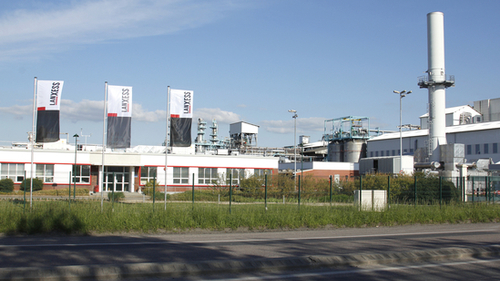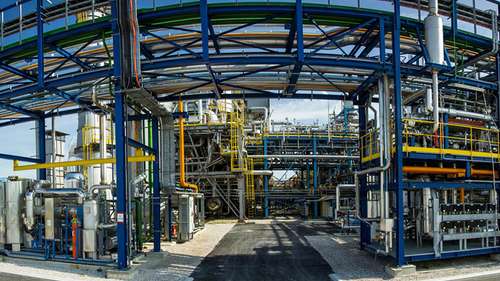LANXESS investing in its French production site for tire rubbers
Port Jérôme/Leverkusen - Specialty chemicals group LANXESS is investing in its production site for high-performance rubber in Port Jérôme, France. The Group plans to invest some EUR 30 million by 2015 to further enhance productivity and energy efficiency. LANXESS produces the high-performance rubbers neodymium-polybutadiene (Nd-PBR) and solution styrene-butadiene (SSBR) at the site. These rubber grades are used primarily for the production of “green tires”.
“The production of high performance rubbers in Port Jérôme plays a key role in our global strategy. We support global megatrends with our innovations and technologies. A particular focus here is solutions for sustainable mobility,” said Axel C. Heitmann, Chairman of the Board of Management of LANXESS AG, at a celebration of the site’s 50th anniversary.
LANXESS is the global market leader in synthetic high-performance rubber for “green tires”. With annual growth rates of around 10 percent, this is the fastest-growing segment of the global tire industry. Increasing demand for “green tires” is being driven by the megatrend of mobility, particularly in Asia and Latin America. LANXESS also expects increased demand in Europe as a result of the EU labeling requirement for tires that enters into force in November 2012. “Our high-performance rubbers are indispensable for meeting the new legal requirements and satisfying the customer wishes expected to arise from them. As the world’s largest partner to the tire industry, we have reacted promptly to this trend by making the corresponding strategic investments decisions and expanding our capacities,” added Heitmann. The plant in Port Jérôme currently has a production capacity of 140,000 metric tons per year. LANXESS is also planning a new plant for Nd-PBR rubber in Singapore. The new plant, which will cost some EUR 200 million to build, is scheduled to start production in 2015.
According to current forecasts, around 2 billion new tires will be produced worldwide in 2015. At the moment, this figure is around 1.6 billion. This represents an increase of around 25 percent for the entire tire industry.
Nd-PBR and SSBR for fuel-efficient and safe tires
Nd-PBR is used mainly in the tread and sidewalls of “green tires”. This rubber grade enables a lower rolling resistance than many other tire rubbers. It also reduces tire abrasion and therefore plays a substantial role in making cars safer and more durable. SSBR is used primarily in the tread of “green tires”. This rubber grade reduces the rolling resistance of tires while also improving wet grip. “Green tires” exhibit the best driving characteristics when they contain both SSBR and Nd-PBR.
100 million bales of rubber since 1962
The production site in Port Jérôme was established in 1962 by the tire maker Firestone. LANXESS took ownership of the site in 2004, and has since invested some EUR 30 million in the modernization of the plant. Approximately 100 million bales of rubber have been produced in Port Jérôme since the facility was opened 50 years ago.
Categories
Investments
Chemical substances
Countries
Companies
Latest news
INEOS launches €250m investment supported by the French Government to secure the future of French industry at Lavera
The project marks the first phase of a long-term regeneration plan to reduce emissions, boost reliability, efficiency and competitiveness, with support of the French State.
Hycamite’s technology to decarbonize shipping awarded AiP by industry leader DNV
Kokkola Industrial Park →Hycamite’s proprietary Thermo-Catalytic Decomposition (TCD) technology offers a new approach to producing clean hydrogen by breaking down methane, the primary component of liquefied natural gas (LN...
Clariant catalysts will power the Ecoplanta: Europe's first waste-to-methanol plant
Chemmed Cluster Tarragona →Repsol is building Europe’s first plant to produce renewable methanol from urban waste The facility will use Enerkem gasification technology to produce 240 KTA of methanol Clariant will supply cata...
Lilly plans to build a new $3 billion facility to boost oral medicine manufacturing capacity in Europe for patients worldwide
Netherlands site will bring 500 manufacturing and 1,500 construction jobs while further strengthening Lilly's global supply chain


